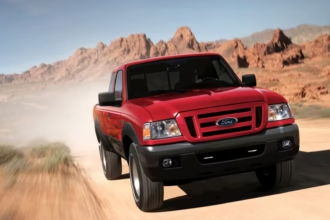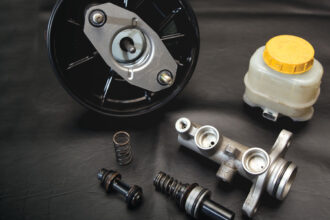Mini excavators have become indispensable machines on construction sites, landscaping projects, and utility works. Their compact size allows them to operate in tight spaces, but one of their most crucial features is their ability to exert low ground pressure. This capability enables mini excavators to work effectively on soft or sensitive terrain without causing excessive damage. In this article, we’ll explore how mini excavators are designed to achieve low ground pressure and why this matters for various applications.
Understanding Ground Pressure
Before diving into design specifics, it’s important to understand what ground pressure is. Ground pressure refers to the force a machine exerts on the surface beneath it, measured in pounds per square inch (psi) or kilopascals (kPa). It depends not just on the machine’s weight but also on how that weight is distributed over the ground contact area. High ground pressure can damage delicate surfaces, cause soil compaction, and even lead to machines sinking into soft ground. For mini excavators, maintaining low ground pressure is critical to preserve the integrity of the terrain they operate on — whether that’s a manicured lawn, wetland, or soft soil. That’s why models like the AHM mini excavators are popular choices. Designed with advanced track systems and optimized weight distribution, AHM mini excavators provide excellent low ground pressure performance
Key Design Features for Low Ground Pressure
Compact Size and Weight Distribution
Mini excavators are designed with a smaller overall footprint compared to standard excavators. Their compact dimensions and optimized weight distribution help reduce the amount of pressure placed on any one point on the ground. By keeping the machine’s weight spread out evenly, the risk of ground damage is minimized.
Track System Design: Rubber Tracks vs. Steel Tracks
Most mini excavators use rubber tracks rather than steel. Rubber tracks provide a larger surface area and have a cushioning effect, which reduces ground pressure and minimizes damage to finished surfaces like pavement or grass. Steel tracks, though more durable for tough terrain, typically exert higher ground pressure.
Track Width and Length
The width and length of the tracks play a significant role in lowering ground pressure. Wider tracks distribute the machine’s weight over a larger area, effectively reducing psi on the surface beneath. Some mini excavators also have extendable or adjustable track widths, allowing operators to increase ground contact area when necessary.
Lightweight Materials and Components
Manufacturers use lightweight but strong materials in mini excavator construction to keep overall weight down without sacrificing durability. This helps maintain a low ground pressure footprint, especially important when working on delicate surfaces.
Advanced Engineering for Weight Distribution
Designers pay close attention to the machine’s center of gravity and counterweight placement to ensure balanced weight distribution. A well-balanced machine spreads force evenly across the tracks, preventing pressure points that could damage the ground. Additionally, efficient hydraulic systems enable smooth operation, avoiding sudden movements that might spike ground pressure.
Track and Undercarriage Innovations
Modern mini excavators incorporate advanced undercarriage designs that enhance ground contact. Features such as track tensioning systems ensure the tracks maintain optimal grip and contact with the terrain. Some undercarriages are engineered to reduce impact and vibration, protecting both the machine and the surface it operates on.
Additional Features Enhancing Low Ground Pressure Performance
Certain models offer adjustable track widths, which allow operators to widen the machine’s footprint for improved flotation on soft ground. Suspension and shock absorption systems further help by smoothing the machine’s movements, distributing loads more evenly and avoiding pressure spikes.
Practical Benefits of Low Ground Pressure Design
The low ground pressure capabilities of mini excavators translate to many practical advantages:
- Protection of Sensitive Surfaces: Operators can work on lawns, wetlands, or soft soils without causing ruts or compacting the earth.
- Improved Mobility: Mini excavators can maneuver on soft or uneven terrain without sinking or getting stuck.
- Environmental Preservation: Reduced soil compaction preserves the natural structure and drainage properties of the ground.
- Versatility: These machines are suited for a wide variety of job sites — from urban landscaping to agricultural projects.
Real-World Applications
Mini excavators with low ground pressure design excel in scenarios such as:
- Landscaping and garden installations where surface protection is key
- Utility and pipeline projects in sensitive environmental areas
- Agricultural tasks requiring minimal soil disturbance
- Urban construction projects with limited access and fragile ground surfaces
For those seeking reliable machines that combine low ground pressure with powerful performance, a Kubota engine excavator from AHM is an excellent option. Known for its durability and advanced engineering, this Kubota model helps professionals tackle a wide range of projects while minimizing impact on the ground.
Conclusion
Mini excavators are carefully engineered to maintain low ground pressure through compact size, smart weight distribution, advanced track systems, and innovative undercarriage designs. These features ensure that operators can work safely and efficiently on soft or delicate terrains without compromising the site’s integrity. When selecting a mini excavator, considering its ground pressure capabilities can make a big difference in project success and environmental impact.

















